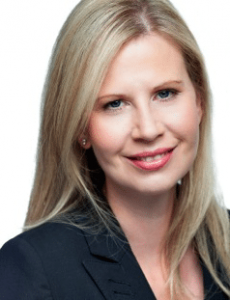Doing Business the Eleanor Roosevelt Way
September 25, 2014By Jen Lawrence
Eleanor Roosevelt wrote “You must do the thing you think you cannot do.” While she was encouraging personal boldness, the message is also applicable to corporate life. In 2010, Audi stated its bold goal of “becoming the leading brand worldwide in the premium car segment.” They aimed to overtake BMW, who has held the number one sales position for the last decade, by 2020. This audacious goal has helped increase their overall performance significantly: courage pays off. Here are some six ideas for bringing Roosevelt’s sense of bravery to the job:
1. Differentiate between smart risk and silly risk. Being courageous at work does not mean challenging the boss to a dual at the next board meeting or neknominating yourself at the offsite. We would never recommend that you walk into a meeting unprepared, take an overly aggressive trading position, or give your boss an ultimatum. While these are risks, they are not smart ones. A smart risk pushes you slightly out of your comfort zone without pushing others out of theirs. Smart risks include asking for the sale, asking for the promotion, or asking for more responsibility. A manager, coach or mentor can be very helpful in encouraging you to take smart risks.
2. Have a strong vision of what you want. I used to be terrified of needles and would do everything in my power to avoid them. Then, when I wanted to have children, I had to have needles almost every day. Suddenly they were not as scary, as my clear vision of family life trumped my fear. The same thing happens at work. You might be terrified of public speaking, but if you want to take on more interesting work in your field, the opportunity to keynote at a conference will help you get over your fears. Have a clear vision of what you want, write it down, and tape it someplace prominent. The daily risks you must take to get you where you want to go will not seem as scary.
3. Practice makes perfect. You can practice courage by taking small risks on a regular basis. This could mean anything from asking to be part of a new project, to writing an article for an industry publication, to offering to mentor a new employee. Take on small stretch goals and then climb, jump, or borrow a ladder in order to reach them on a regular basis. You’ll get used to feeling brave.
4. Courage can be borrowed. In a third century BC parable from Zhan Guo Ce, a fox is caught by a hungry tiger. The fox, trying to figure out a way to save himself, tells that tiger that he is king of the beasts and should not be eaten. The tiger does not believe the much smaller animal so the fox challenges him to follow him through the forest and see how the other animals react. The two set off together and the other animals, seeing the tiger, run away in fear. The fox takes full credit for their fearful response and the tiger, believing him, spares his life. While this parable mainly seems to be about the gullibility of tigers, it also shows how we can borrow courage. Surrounding ourselves with courageous people can help us to feel more bold. We can attend conferences with like-minded people, join a mastermind group, or invite someone we admire for lunch. There are lots of people out there who are taking risks and doing interesting things. Spend more time with them and you will find their courage is contagious.
5. Practice courage in your personal life. If you are nervous taking risks at work because the stakes feel too high, start building those courage muscles at home. Take the microphone on karaoke night, volunteer for that school committee, or sign up for ziplining. If you learn the benefit of taking calculated risks in your personal life, you’ll be more comfortable taking them at work.
6. Assess the risk. Part of what makes bold actions scary is the inherent downside. Before doing something brave, it can be helpful to contemplate what might go wrong. It’s useful to look at the potential problems (what might go wrong) and the potential causes (why it might go wrong.) You can look at preventing these problems and minimizing the impact should the problem still occur. As an example, perhaps you are contemplating buying a house but are terrified it will burn down. As a way to prevent fire, you can make sure the electrical system and stove are in good working order. As a way of minimizing the damage of a fire, you can install an alarm system and sprinklers. Assessing risk can help you to be more courageous, as it’s easier to take a leap of faith when you are fairly certain it won’t lead to disaster.
We hope you do something today to flex your courage muscles. It is fun, makes your job more interesting, and can serve to inspire others. Most people regret what they don’t do more than what they do, so take a page from Eleanor and do that thing that scares you just a bit.
Lawrence, who holds an MBA in Finance, has widely written and spoken on corporate culture, critical thinking, and strategic planning. She has been interviewed by media outlets including The Toronto Star, Report on Business TV, National Post, and Toronto Life. A resident of Toronto, Lawrence is a proud mother of two children.














